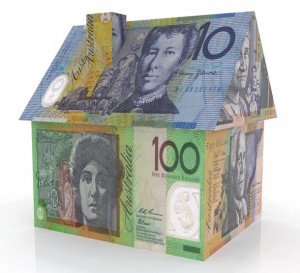
Our old friend and property advocate Monique Sasson Wakelin is out today with an analysis of the effect of a falling Australian dollar on property prices. I’m a bit torn by this piece because it tackles macroeconomics, which is almost always lacking in most investment spruiks, so including it is admirable. Sadly, though, it gets it wrong. According to Wakelin:
Those investing in property overseas are most exposed to the vagaries of currency movements. If you’re already invested in overseas assets, then the fall in the Australian dollar has been good news, as the Australian-denominated value of your overseas assets and any income stream has now risen. In contrast, those now considering a property investment overseas are faced with a 10 per cent jump in costs since the start of the year simply due to exchange rate movements. Of course, should they proceed anyway, buy now and the Australian dollar falls further, then they will still profit from their timing.
Investing in property overseas is a glamorous prospect, but be very careful.
It is an inherently speculative pursuit, given the outcome can be so dependent on fickle, capricious currency movements. Add to that an unfamiliar market place, legislative environment and tax regime. To my mind, it’s a strategy only suitable for those who have a portfolio of domestic property assets and are looking to diversify (in that respect, it is akin to the cross-border diversity we all seek with our equity portfolio).
No objection from me here. Investing in offshore property is risky unless you’re plugged in to local conditions, which in itself demands a lot of travel and investment in time. And although I’m very comfortable with my forecast that the Australian dollar will fall much further, it’s true to say that most property investors are probably not forex experts. Certainly there are easier ways to play the currency.
But Wakelin’s biases become more apparent when she turns to the dollar’s effects on local property:
On the flip side, a lower Australian dollar may increase the attraction of Australian property to overseas investors – in particular, new or off-the-plan property, given that Foreign Investment Review Board (FIRB) rules exclude non-residents from buying established property.
I’ve no doubt that there are scores of developers out there making that very case in their sales material directed to overseas buyers. Some will also seek to entice domestic buyers with the scenario that if they buy now they’ll benefit from the “inevitable” uplift in property prices driven by overseas-buyer demand. Suffice to say, be wary of such claims. The reality is that inward investment flows into Australian residential property are modest, and represent a very small proportion of the total market.
So, Australian investors should be cautious of “capricious” currency movements (despite the trend being favouable) but foreign investors into Australia will not be (despite the trend being unfavourable)?
Not only is this inconsistent, it is wrong. In a former working life I had direct exposure to the foreign market for Australian property during 2008/09, the last time the dollar fell heavily. Believe you me it did not benefit demand. In fact, there was a run on deposits made on new developments to the extent that the banks tightened rules around developer lending with regard to the proportion of foreign located deposits against which they would lend for the build. This contributed to the collapse of several major new developments that the proposed Rudd Bank was designed (stupidly) to fund.
Sure, once the dollar had bottomed at 60 cents, with the downside limited, stimulus pouring into the economy and FIRB rules lifted, demand returned, as you’d expect.
But we’re nowhere near there are we? No. And, barring an accident in China or revelation at the RBA, the dollar looks like it’s going to grind lower in a series of steps as interest rates fall further. As such, foreign investors into Australian property face rising currency risk for an enduring period. If this benefits demand I’ll eat my hat.
Wakelin then gets one final point wrong:
A lower dollar raises the price of imports. Given that around 40 per cent of the basket of goods and services that constitute the Consumer Price Index are drawn from overseas, a falling dollar could eventually feed through to price inflation. Were this impact to be significant, then the Reserve Bank would raise interest rates. In turn, the retail banks would raise mortgage rates and this could well see softer property prices.
As I’ve said before, unless the economy rebounds (which is unlikely given the overly slow rebalancing to non-mining growth) the RBA will look through tradeable inflation so the interest rate risk is negligible.
That will be some comfort to local investors but it in no way offsets the currency risk for foreign buyers.

